Solar Fence Lights: Guide to Selection, Installation, and Uses
In an era where environmental awareness is increasingly deeply rooted, solar-powered outdoor lights for fence have gradually become a popular choice for American households for courtyard decoration and safety protection, thanks to their energy-saving, eco-friendly, and easy-to-install features. Whether in warm southern courtyards or snowy northern gardens, a well-suited solar-powered fence outdoor light can play a significant role. This article will comprehensively explain practical knowledge about solar-powered fence outdoor lights for American users from aspects such as climate adaptation, installation techniques, smart functions, environmental value, and function expansion.
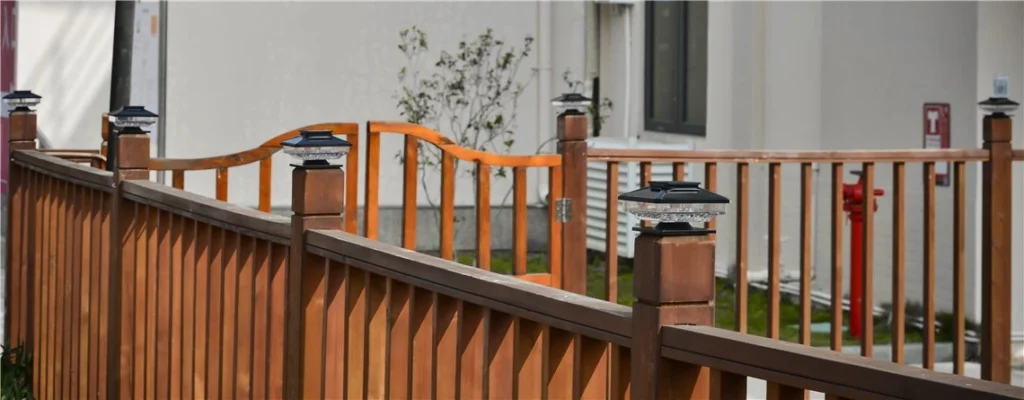
Adapting Solar Fence Lights to Different Climatic Conditions
The United States spans a vast territory with significant climatic differences, ranging from the temperate continental climate in the Northeast to the desert climate in the Southwest, from the subtropical humid climate in the Southeast to the polar climate in Alaska. Different regional climatic conditions impose varying performance requirements on solar-powered outdoor lights for fence.
The Northeast region has long, cold winters with heavy snowfall. Low temperatures often affect the storage capacity of solar panels and the normal operation of lights. When choosing solar-powered fence outdoor lights in this area, it is crucial to focus on their cold resistance. Products that can work normally below -20°C should be selected. Meanwhile, snow easily covers solar panels, reducing light absorption efficiency. Therefore, models with automatic snow removal functions or adjustable tilt angles for solar panels are more suitable. For example, in many households in Massachusetts, solar-powered fence outdoor lights with manually adjustable panel angles are chosen, allowing timely angle adjustment after snowfall to ensure sufficient sunlight absorption.
Areas like Arizona in the Southwest have a desert climate with extremely high summer temperatures and intense sunlight. Solar-powered fence outdoor lights here need excellent high-temperature resistance to prevent damage to internal components due to high heat. In addition, strong ultraviolet radiation easily ages the lamp housing, so choosing products with UV-resistant materials for the housing is essential. Local users have reported that solar-powered fence outdoor lights made of UV-resistant materials have a lifespan 2-3 years longer than those made of ordinary materials.
Regions like Florida in the Southeast have a subtropical humid climate with year-round high temperatures, heavy rainfall, and high air humidity. In such environments, the waterproof and moisture-proof performance of solar-powered fence outdoor lights is a top priority. It is recommended to choose products with a waterproof rating of IP65 or higher to prevent rainwater from seeping into the lamp and causing short circuits. Moreover, the humid environment is prone to mold growth, which affects the appearance and performance of the lights. Lamps with anti-mold coatings will be a better choice.
Alaska has a polar climate with year-round cold and significant differences in daylight hours across seasons. Using solar-powered fence outdoor lights in this region requires selecting solar panels with high conversion efficiency to store as much electricity as possible during limited daylight hours. At the same time, the frost resistance of the lights must be extremely strong to withstand extreme low temperatures.
Adaptation Techniques for Fence Materials and Light Installation
Common fence materials in American households are diverse, and different materials have distinct physical properties. This requires corresponding adaptation techniques when installing solar-powered outdoor lights for fence to ensure firm installation, safe use, and aesthetic coordination.
Wooden fences are one of the common fence types in American courtyards. Their soft material makes installation relatively simple. When installing solar-powered fence outdoor lights, wood screws can be used to directly fix the lights to the wooden fence. However, it should be noted that wood is prone to moisture and deformation, so the hole size during drilling must be controlled to avoid looseness due to overly large holes. In addition, it is advisable to apply anti-corrosion paint at the contact point between the screw and the wood to prevent wood damage caused by screw rust. For example, in rural areas of Oregon, many households apply a layer of anti-corrosion wood oil to the installation positions before mounting solar lights on wooden fences.
Metal fences are sturdy and durable but have strong conductivity and are prone to rust. When installing solar-powered fence outdoor lights, first, ensure that the wire connections of the lights are well-insulated to avoid electric leakage accidents. For wrought iron fences, metal clips or welding can be used to fix the lights, but during welding, it is necessary to protect the anti-rust coating of the fence and reapply anti-rust paint promptly after welding. Aluminum alloy fences can be fixed with screws; since aluminum alloy is not easily rusted, maintenance is relatively simple, but screws matching the aluminum alloy material should be selected to prevent electrochemical corrosion.
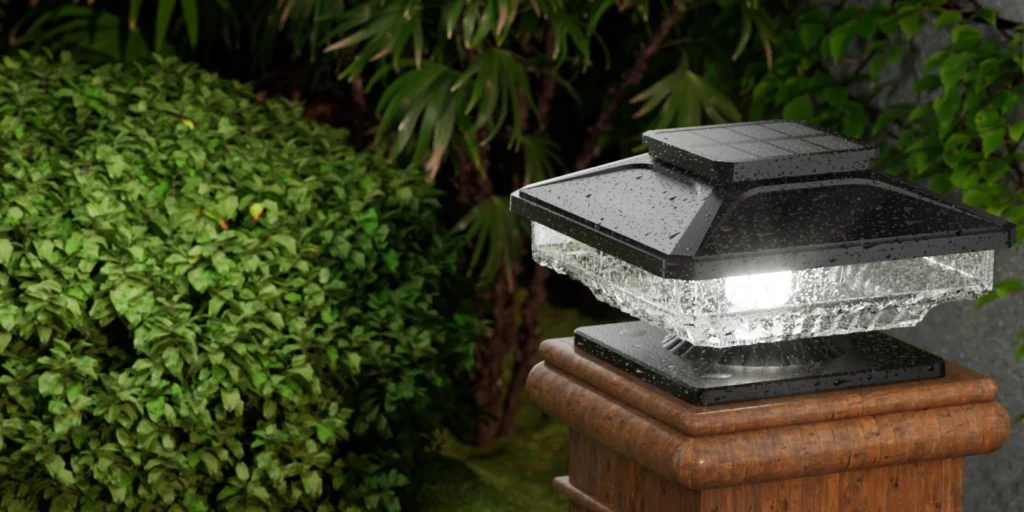
Concrete fences are hard and stable but pose greater difficulty in installing solar-powered fence outdoor lights. It is necessary to use a percussion drill to drill holes in the fence and then fix the lights with expansion screws. During drilling, precise positioning according to the hole positions on the lamp base is required to avoid installation issues due to deviated drilling positions. In some high-end communities in California, many households hire professionals with special tools to drill and install solar-powered fence outdoor lights on concrete fences to ensure installation quality.
Vinyl fences are aesthetically pleasing and corrosion-resistant but relatively brittle. When installing solar-powered fence outdoor lights, excessive force should be avoided. Special clip-on fasteners can be used to gently attach the lights to the fence. During installation, care should be taken not to squeeze the fence hard to prevent cracks.
Practical Applications of Smart Sensing Functions in Solar Lights
With the development of technology, solar-powered outdoor lights for fence are gradually equipped with smart sensing functions, such as light sensing, motion sensing, and sound sensing. These functions can play unique advantages in different practical scenarios, bringing convenience to the lives of American users.
At the entrance of a family courtyard, installing solar-powered fence outdoor lights with dual functions of light sensing and motion sensing is very practical. The light sensing function enables the lamp to turn on automatically when it gets dark, eliminating the need for manual operation. When someone approaches the courtyard entrance, the motion sensing function will make the lamp automatically increase its brightness, illuminating the visitor’s face to facilitate the host’s identification of visitors and deter potential intruders. In many single-family homes in Texas, such smart sensing solar-powered fence outdoor lights are widely used at courtyard entrances, significantly improving home safety.
Along the garden paths, installing solar-powered fence outdoor lights with motion sensing functions can provide lighting for family members walking in the garden at night. When someone walks along the path, the lamp turns on automatically, illuminating the road ahead to prevent pedestrians from falling due to poor visibility. After the person leaves, the lamp will automatically turn off after a certain period, saving energy without causing light pollution. This function is particularly useful for families with elderly and children; for example, in many family gardens in Florida, such lamps are widely used.
When installing solar-powered outdoor lights for fence on fences around swimming pools, choosing products with waterproof functions and motion sensing functions is very appropriate. When someone approaches the pool fence, the lamp turns on automatically, reminding people to pay attention to the surrounding environment and preventing accidental falls into the water. Especially at night, when the area around the pool is dimly lit, such smart sensing lighting can effectively reduce the risk of accidents. In many households with private pools in Arizona, this application scenario is common.
In addition, installing solar-powered fence outdoor lights with sound sensing functions on the perimeter fences of commercial places, such as small shops and office buildings, is also necessary. When there are abnormal sounds at night, the lamp turns on automatically, which can illuminate the scene and attract the attention of security personnel, playing a certain security role.
Long-Term Environmental Value and Energy-Saving Data Reference
As a lighting device using clean energy, solar-powered fence outdoor lights can bring significant environmental value and energy-saving benefits in long-term use. This aligns with the green environmental protection concept advocated in the United States and can also save users a lot of electricity expenses.
From an environmental perspective, solar-powered fence outdoor lights rely on solar energy for power generation, eliminating the need to consume traditional power resources and reducing emissions of harmful gases such as carbon dioxide and sulfur dioxide during thermal power generation. According to data from the U.S. Energy Information Administration (EIA), traditional outdoor incandescent lamps consume approximately 60 watts per hour, while an ordinary solar-powered fence outdoor light typically has a power of 5-10 watts, with energy coming from solar energy. Taking a household with 6 solar-powered fence outdoor lights, averaging 6 hours of lighting per day, this can reduce carbon dioxide emissions by approximately 100-200 kilograms per year. In the long run, the contribution to improving environmental quality is quite significant.
In terms of energy saving, the energy-saving effect of solar-powered fence outdoor lights is even more obvious. Traditional outdoor lights need to be connected to the power grid for power supply, resulting in certain monthly electricity expenses. In contrast, solar-powered fence outdoor lights require a one-time investment, with almost zero subsequent usage costs. Based on the average U.S. household electricity price of approximately $0.15 per kilowatt-hour, using traditional 60-watt outdoor lights, 6 lamps lighting for 6 hours a day would cost about $14.58 per month (calculated as 6×60×6×30÷1000×0.15). Using 10-watt solar-powered fence outdoor lights can save this part of the electricity bill, amounting to approximately $175 per year. For a community or a region, popularizing the use of solar-powered fence outdoor lights on a large scale will result in a substantial total energy saving.
In addition, solar-powered fence outdoor lights have a relatively long service life, generally 5-8 years, while traditional outdoor incandescent lamps typically last 1-2 years. The longer service life reduces the frequency of lamp replacement, lowers waste generation, and reduces resource consumption for producing new lamps, further reflecting their environmental value.
Many states in the United States have policies encouraging the use of solar products; for example, California offers tax reduction incentives for households installing solar equipment. Users installing solar-powered fence outdoor lights may also meet the requirements of local relevant policies and enjoy certain policy benefits, which also promotes the popularization and application of solar-powered fence outdoor lights.
Development and Expansion of Functions in Non-Lighting Scenarios
In addition to basic lighting functions, solar-powered fence outdoor lights can be developed into various practical functions in non-lighting scenarios, adding more convenience and fun to the lives of American users and improving the overall quality of courtyards and fence areas.
In decorative scenarios, solar-powered fence outdoor lights can be the highlight of courtyards and fences. Choosing solar-powered fence outdoor lights with different colored lights and flashing modes can create a strong festive atmosphere when decorated on fences during holidays such as Christmas and Halloween. For example, in many households in New York, colorful solar light strings are hung on courtyard fences during Christmas. These solar-powered fence outdoor lights do not require complex wiring; they absorb sunlight during the day and turn on automatically at night, adding warmth and joy to the festival. In addition, solar-powered fence outdoor lights with unique shapes, such as flower-shaped or animal-shaped ones, can be selected according to the overall style of the courtyard to make the fence area more ornamental.
In safety warning scenarios, solar-powered fence outdoor lights can also play an important role. Installing always-on or sensor-equipped solar-powered fence outdoor lights at positions prone to accidents on fences, such as corners and height drops, can remind pedestrians to pay attention to road conditions and avoid collisions or falls. On courtyard fences close to roads, installing brighter solar-powered fence outdoor lights can make passing vehicles more easily aware of the existence of the fence, reducing traffic accidents. For example, in suburban areas of Texas, many households near highways install eye-catching solar lights on their fences, which have played a good safety warning role.
solar-powered outdoor lights for fence can also be integrated with smart home systems to develop more intelligent functions. By connecting to a smart home APP, users can remotely control the on/off, brightness, and light color of solar-powered fence outdoor lights. When users travel, they can remotely control the lights via the APP to create the illusion that someone is at home, improving home security. Meanwhile, some solar-powered fence outdoor lights with sensors can transmit environmental information around the fence, such as temperature and humidity, to the smart home system, providing users with more comprehensive home environment data.
In addition, in small outdoor activity scenarios such as courtyard barbecues and friend gatherings, solar-powered fence outdoor lights can provide soft auxiliary lighting to create a comfortable atmosphere. Choosing solar-powered fence outdoor lights with adjustable brightness allows users to adjust the light intensity according to activity needs, making the event more warm and pleasant.



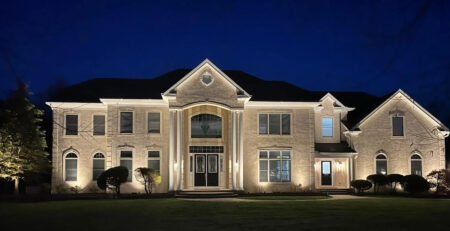
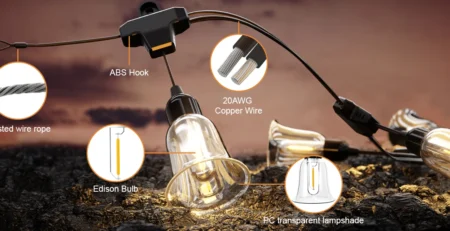
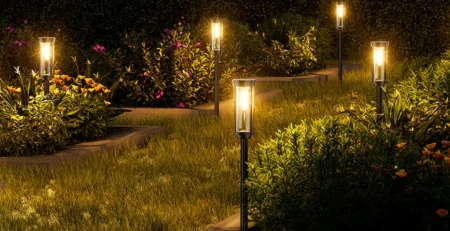
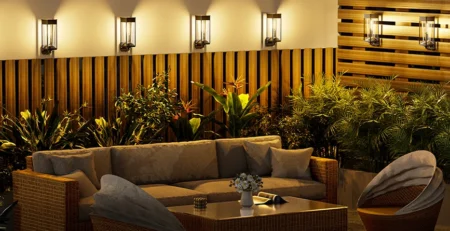
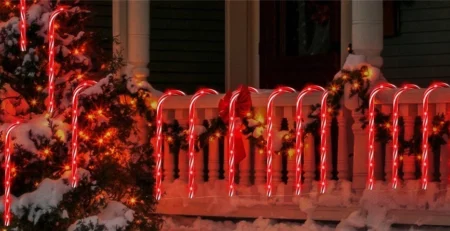

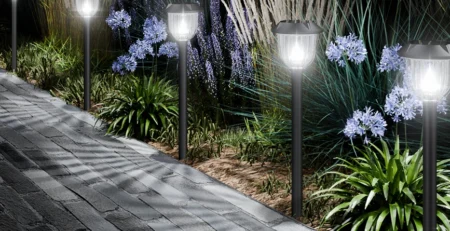
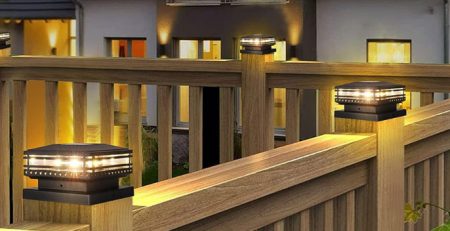
Leave a Reply